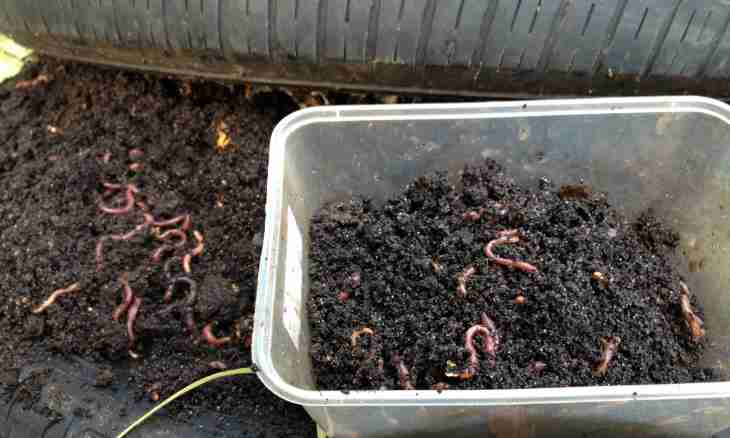Cultivation of worms in house conditions does not demand big efforts or investments, however has the nuances. What capacity to choose for a worm mini-farm, where to take worms for cultivation and what to feed them with?
How to breed worms or creation of a vermiferma
The ordinary local worms who are brought together in the green space suit for cultivation.
In the suitable place dig out a small pole, fill it with the rotted-through leaves, vegetable and fruit cleanings (excepting garlic, potatoes, a citrus and onions). After that the forage is watered, and the pole is covered with cardboard or a board. It is possible to bring together the individuals who lodged near a feeding trough in a week.
Where to breed worms
The house worm farm will require strong tanks. For this purpose will approach:
- the enameled ware;
- old aquarium;
- buckets, basins, any other metal (not zinced) or plastic tanks.
Container, habitual for short-term storage of worms, – the linen bag, wooden or plywood boxes do not suit for long-term use. They quickly dampen, boxes begin to start to rot, bags – to rot.
The chosen capacity before use should be prepared. By means of a drill (7-9 mm) in the bottom of future farm make openings which will take away excess water. Openings have to be evenly distributed on all bottom.
Under a container the tray is necessary. Before establishing capacity on a tray, the last needs to be filled with dry sand – it will absorb surplus of water. Will be a layer in 3 cm enough.
Conditions for cultivation of worms
It is recommended to breed worms indoors in which temperature does not fall below +4 °C, otherwise hearts will fall into hibernation and will not breed. Optimum temperature – from 17 to 24 °C.
The size of a container is calculated proceeding from quantity of the available worms. At least 1 sq.m of surface area has to fall on 1 kg of individuals.
Worms do not transfer sunshine therefore it is desirable that the chervyatnik settled down in the dark place.
What to fill capacity with
Different ways of filling of a mini-farm are possible.
The first layer – straw or large sawdust. Its height has to be about 5 cm. Afterwards pour out a biohumus (it is on sale in flower shops). Height of this layer – about 10 cm. The third layer stack a forage: fruit and vegetable scraps, old tea leaves (without sugar), a coffee thick. The forage is evenly distributed on all surface a layer in 5 cm. The humus layer goes the topmost. Its height – 2 cm.
If for filling of a container where cultivation of worms will be carried out, usual soil undertakes, it is necessary to watch that it did not contain roots and leaves. At a peregnivaniye of leaves a large amount of oxygen is spent.
What to feed worms with
As a forage it is possible to use almost all waste. Potato cleanings, a citrus, onions and garlic are an exception. You should not use salty food, meat or fish for feeding.
Favourite food of worms – porridge. It is possible to give them also dry oat-flakes, however it is necessary to consider that dry flakes take away moisture from the soil.
How often to water worms
It is necessary to water a chervyatnik plentifully. Surplus of moisture will leave through drain holes. Watering is made at each feeding. If indoors high temperature, the thicket has to water.
It is possible to check quality of moistening of soil an easy way – to squeeze a handful of the top layer in a fist. If through fingers water appears, moisture is enough.
Water has to be defended (not less than 3 days), room temperature.
Cultivation of worms – process simple. Observance of simple rules will allow to avoid typical errors of beginners and to receive really working house vermiferma.
